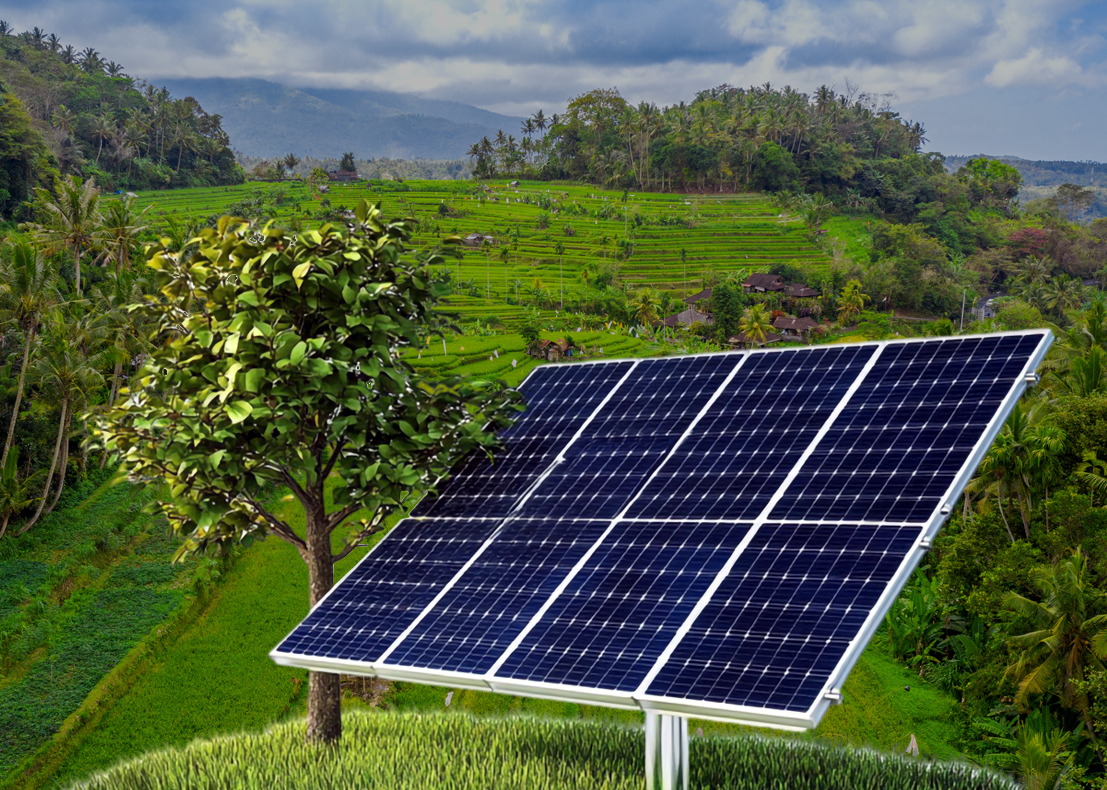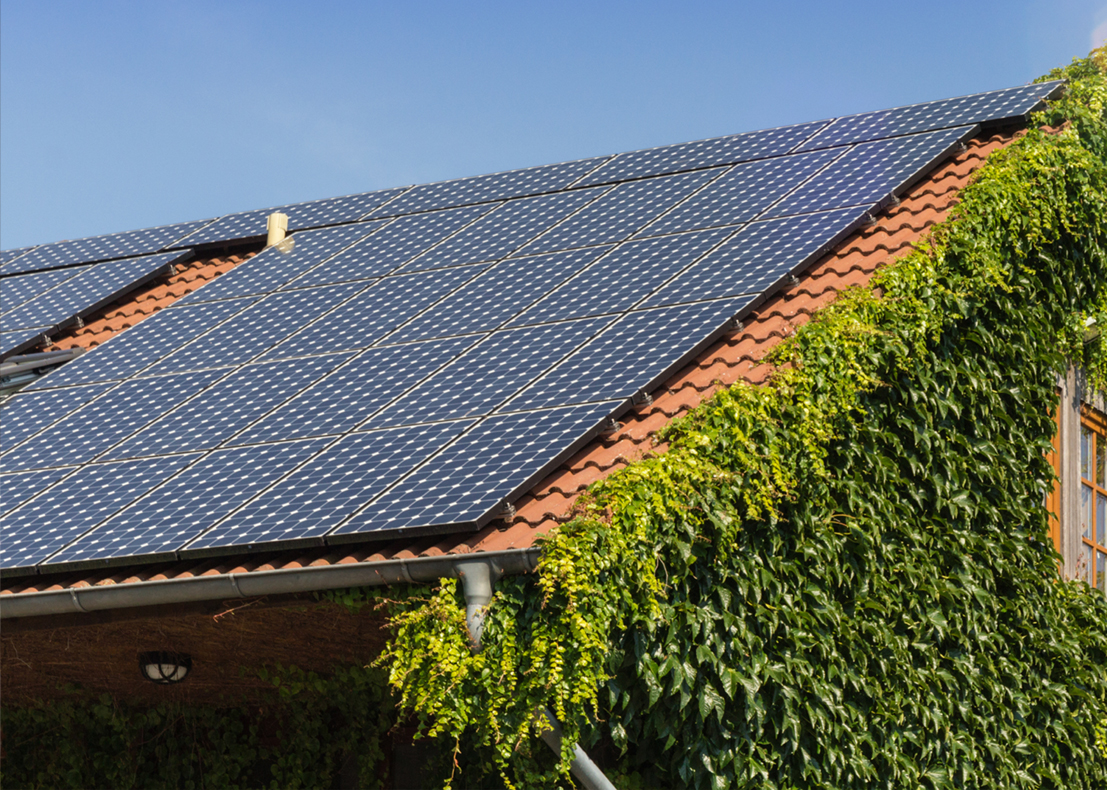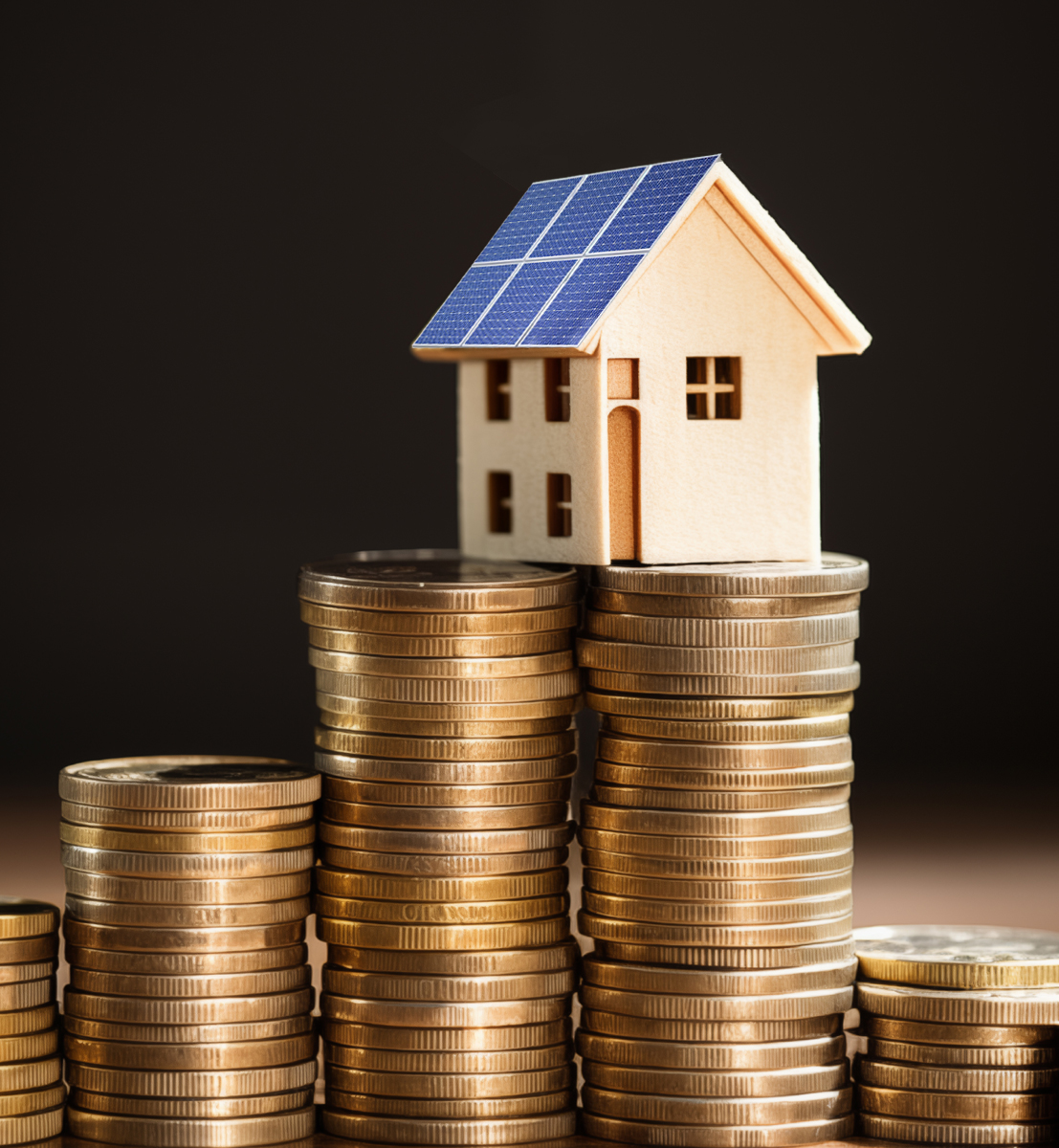Are you interested in residential solar panels,
solar farms, or a specific aspect of solar energy?
Kerala, a state in southern India, is actively promoting renewable energy to reduce its reliance on fossil fuels. Solar energy, with its clean, sustainable and cost-effective qualities, is a particularly suitable alternative, especially given the state's abundant sunlight and high electricity demand.

Solar Subsidy Scheme in Kerala.
Kerala's solar subsidy scheme is designed to encourage the adoption of solar energy among homeowners and housing societies. By providing financial assistance, the scheme helps lower the upfront costs of installing solar panels, making solar energy more affordable and accessible. This initiative improves the return on investment (ROI) for consumers, enabling more people to benefit from solar power.
Key Features of the Scheme
- Financial Support
The scheme offers subsidies that significantly reduce the initial cost of solar panel installations -
Increased Affordability
With the subsidy in place, solar systems become more cost- effective for a wider range of consumers, making clean energy a feasible option for many. - Net Metering
The solar systems in Kerala follow net metering guidelines, allowing consumers to sell excess energy back to the grid and earn solar credits, which helps further reduce their electricity bills.

Subsidized Solar Panels
In Kerala, the price of subsidized solar panels is much lower compared to non-subsidized ones. This financial aid plays a key role in making solar energy systems more affordable for consumers, reducing the overall cost of installation.

Rooftop Solar Program Phase II:
The central government's Rooftop Solar Program Phase II promotes the installation of grid- connected rooftop solar systems. This initiative provides fixed financial assistance for residential properties, large villas, and housing societies in Kerala, helping to drive the widespread adoption of solar energy

National Portal for Rooftop Solar:
The National Portal for Rooftop Solar is a crucial online platform for processing and distributing solar panel subsidies across India, including Kerala. This platform offers consumers a convenient and comprehensive way to apply for subsidies, track their applications and access important information about solar system installations. The simplified scheme provides a fixed subsidy amount based on the approved size of the solar system.
Benefits of the Solar Subsidy Scheme
Lower Installation Costs
The central government's Rooftop Solar Program Phase II promotes the installation of grid- connected rooftop solar systems. This initiative provides fixed financial assistance for residential properties, large villas, and housing societies in Kerala, helping to drive the widespread adoption of solar energy
Energy Independence
By generating their own electricity, consumers can reduce their reliance on the grid.
Environmental Benefits
Solar energy adoption contributes to reducing carbon emissions, leading to a cleaner and more sustainable environment.
Long-Term Savings
The net metering system allows consumers to earn credits for excess electricity, which helps lower future electricity bills
Solar Power Plant Prices in Kerala
January 2025 (Pre-Subsidy Rates)
Solar Power Plant Prices in Kerala - January 2025 (Pre-Subsidy Rates) To estimate the cost of a solar system in Kerala, the following price ranges apply for residential systems before any subsidies are considered:
| Solar Plant KWp Capacity | Price Range (Without Subsidy) |
| 1 KWp | ₹ 85, 000 - ₹ 95, 000 |
| 2 KWp | ₹ 1,60,000 - ₹ 1, 80,000 |
| 3 KWp | ₹ 1,99,000 - ₹ 2, 35,000 |
| 4 KWp | ₹ 2,62,000 - ₹ 2, 95,600 |
| 5 KWp | ₹ 3,35,000 - ₹ 3, 77,000 |
| 10 KWp | ₹6,35,000 - ₹ 8, 00,000 |

Kerala's solar subsidy scheme plays a pivotal role in promoting renewable energy and reducing the state's reliance on fossil fuels. By making solar energy systems more affordable and accessible, the scheme empowers homeowners and housing societies to invest in sustainable energy solutions. This initiative not only offers financial and environmental benefits but also contributes to a cleaner, more energy-efficient future for the state.
Solar Subsidy Overview (Effective January 2025
Subsidy for Rooftop Solar Systems:
Steps to Apply for a Solar Subsidy in Kerala:

Register on the SANDES App & National Portal
Download and register on the SANDES app and the National Portal for Rooftop Solar.
Provide Required Information
Enter your electricity connection details and personal contact information.
Submit the Subsidy Application
Fill in your address, proposed system capacity, and details of any existing solar system.
Wait for Technical Feasibility Approval
The local DISCOM company will review your application and approve the feasibility.
Hire a Registered Solar Vendor
Once approved, hire a registered or empaneled vendor to install the rooftop solar system.
Select Quality Solar Components
Choose high-quality solar components and ensure the use of domestically manufactured solar modules.
ign the Model Agreement
Sign the model agreement to ensure consumer protection.
Post-Installation Submission
After installation, submit the project details for inspection and net-metering setup.
Inspection & Net-Metering Setup
The DISCOM authority will inspect the system and integrate the net-metering mechanism.
Receive Commissioning Certificate & Subsidy
After receiving the commissioning certificate, submit your bank details to receive the approved subsidy amount within 30 days.
Difference Between the Solar National Portal Subsidy & Tender-Based Solar Subsidy Program in Kerala - January 2025
If the initial investment has been a barrier, it's important to consider the availability of subsidies when evaluating the pricing of home solar systems in India.
Rooftop Solar National Portal Subsidy
Under the Rooftop Solar National Portal Subsidy Scheme, customers are required to pay the full cost of the solar project to the developer. The subsidy is then reimbursed directly to the customer's bank account within a specified period (usually around 1 month or more). Pricing may vary depending on the solar developer and there is no standard pricing. Factors like the technology used, the brand of equipment and other variables can cause the prices to differ.
State-Level Tender-Based Portal Subsidy (Soura Scheme)
In the State-Level Tender-Based Portal Subsidy Scheme, known as the ‘Soura Scheme’ by KSEB, the pricing for solar systems is determined through a tender process conducted by KSEB. All participating companies must adhere to the same price for standard system specifications. A list of empaneled companies is published on KSEB's official website.
Under this scheme, customers only pay the cost of the system, minus the subsidy amount, directly to the developer. This means the subsidy benefit is deducted upfront, eliminating any delay for the customer. After installation and quality approval, KSEB releases the subsidy to the developer, ensuring customers face minimal risks.
Solar Capacity Allocation and Subsidy Initiatives in Kerala
In addition to the National Portal for Rooftop Subsidy scheme, the Ministry of New and Renewable Energy (MNRE) allocated around 200 MW of capacity for Kerala in the 2021-22 fiscal year. The Kerala State Electricity Board Limited (KSEBL) is responsible for executing this allocation through a large-scale initiative known as Soura Phase 1 and 2. Additionally, the Surya Thejus Scheme, supported by the Agency for Non-conventional Energy and Rural Technology (ANERT), is offering subsidies to end customers as part of the program. Approximately 35 approved companies are currently involved in the implementation of this initiative across Kerala.
KSEB's Ongoing Subsidy Program (Exclusively for Residential Consumers)
A 40% subsidy is available for systems up to 3 kW and a 20% subsidy for systems up to 10 kW. The total subsidy allocation for Kerala from MNRE is 2,00,000 kW (200 MW) with approximately 50 MW remaining. The application deadline for this subsidy is March 2025. All products and installation procedures must meet the minimum standards set by MNRE/ALMM/BIS/IEC.
On-Grid Solar Subsidy for Residential Consumers in India - January 2025
The Indian government, through the Ministry of New & Renewable Energy (MNRE), offers solar subsidies under the Central Financial Assistance (CFA) program. These subsidies are provided as a percentage of the benchmark price set for each on-grid project capacity. Currently, CFA subsidies are available exclusively to domestic consumers. It is important to note that the subsidy is limited to the lower value between the MNRE-determined benchmark price and the price discovered through the tender process, which can vary by state. The table below outlines the benchmark price and the corresponding central financial assistance/subsidy per kWp for various on-grid project capacities:
| Project Capacity | Benchmark Price/kWp (GST Excluded) |
Centreal Assistance/Subsidy % | Central Financial Assistance/Subsidy Amount/kWp |
| Upto 3 kWp | Rs.36,470 |
40% | Rs. 14,588/kWp |
| >3 kWp Upto 10 kWp | Rs.36,470 | 20% | Rs. 7,294/kWp |
| >10 kWp | Subsidy is available |
But is limited to the first 10 kWp | Rs. |
For on-grid projects with capacities above 10 kWp, the CFA subsidy is available to domestic consumers, but it is limited to the first 10 kWp of the system.
Space/Roof Area Required for Solar Panel Installation:
For every 1 kWp of solar power capacity, approximately 100 square feet of shade-free area is required, ideally with direct sunlight exposure and a south-facing orientation. East/West orientation is also acceptable, with south being preferred.
Average Price of Solar Power Plants:
The average cost of solar power plants ranges from ₹63,000 to ₹73,000 per kWp.
Expected Monthly Power Generation:
A 1 kWp solar system typically generates between 90 to 120 units of electricity per month.
Additional Charges for Solar Installation:
If the consumer's roof is not flat, any extra costs for structural modifications needed to accommodate a sloping roof or other obstacles will be borne by the consumer. The cost of the net meter and any cables extending beyond 50 meters are not included in the initial price. However, net meters are typically available for rent from KSEBL. It ensures that any future issues with the meters, such as complaints or billing problems due to faulty meters, will be addressed by KSEBL. This way, customers don't have to worry about meter quality or related billing concerns
FAQ's
Solar FAQ – Answers
How much subsidy is provided under the scheme?
The subsidy is offered based on the capacity of the solar panel system:
Up to 3 kW: 60% subsidy
4-10 kW: 40% subsidy
Above 10 kW: No subsidy beyond 10 kW (subsidy is limited to a maximum of 10 kW).
What is the installation timeline for the system?
The installation and activation process typically takes 30-60 days from the approval of your application, including site inspection and subsidy disbursement.
Will my electricity bill be completely free each month?
If your solar system generates enough electricity to meet your monthly usage (within 300 units), your electricity bill could be reduced significantly or even become zero.
Can housing societies apply for this scheme?
Yes, housing societies are eligible to apply for the installation of solar panels on common rooftops, enabling all residents to benefit from the system.
How can I get more information or assistance about the scheme?
For additional information, you can visit the official website or reach out to the toll-free helpline at 15555
For More Details
CONTACT US
70347 88882
NORTH KERALACalicut Regional Office
70259 88885
MIDDLE KERALACochin Head Office
99467 88886
SOUTH KERALATrivandrum Regional Office